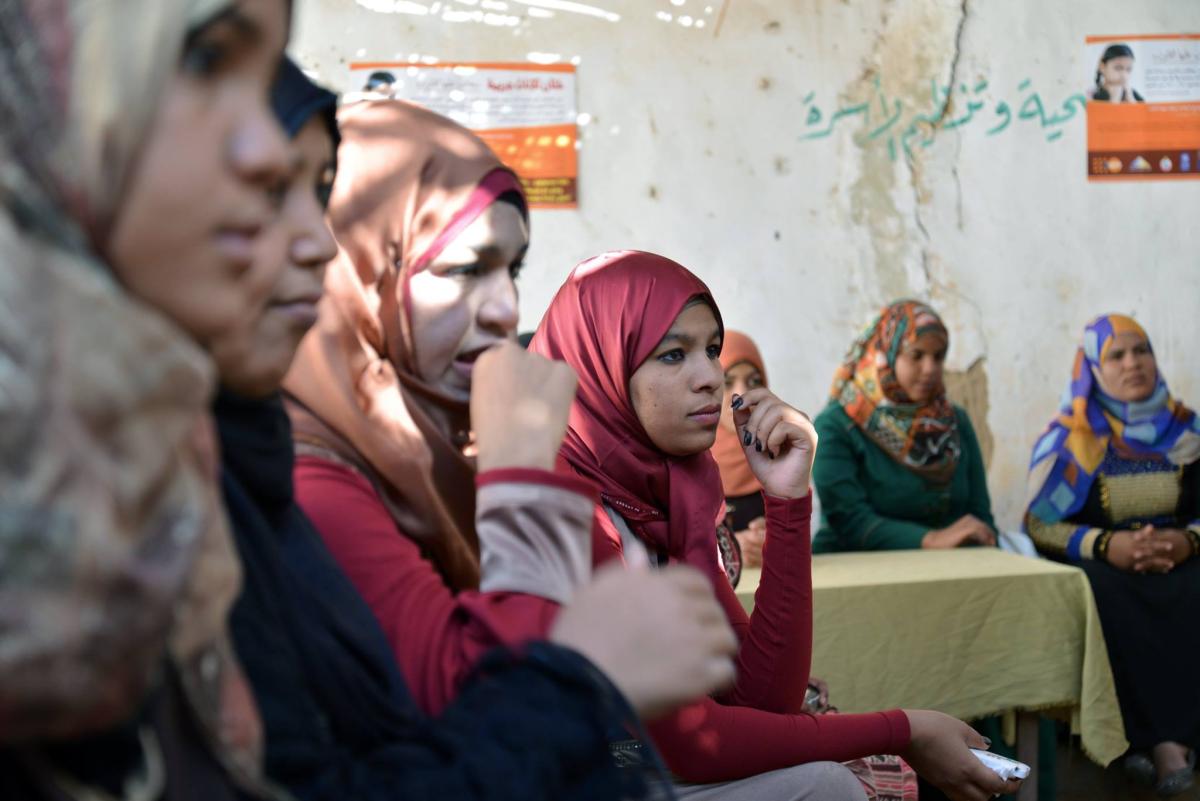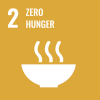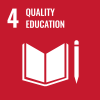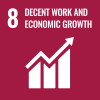
INTRODUCTION
With its central pledge to leave no one behind and to reach the furthest behind first, the 2030 Agenda for Sustainable Development echoes the commitment to promoting social inclusion contained in the 1995 Copenhagen Declaration on Social Development.
In SDG Target 10.2, countries explicitly committed to promoting the social, economic, and political inclusion of all, regardless of age, sex, disability, race, ethnicity, origin, religion, or economic or other status. Yet in many contexts, these ascribed characteristics remain a significant source of disadvantage. A sizeable share of total inequality in income is explained by inherited characteristics that should have no bearing on life chances, for example, 77 per cent in South Africa, 66 per cent in Brazil, 50 per cent in India and 49 per cent in Bulgaria. These inequalities are unfair and persistent, often passed from one generation to the next through interlinked disadvantages in health, education, nutrition, and access to decent work.
Given persistent and high inequalities, improving the terms of participation for people who are disadvantaged on the basis of their group characteristics through enhanced access to opportunities, resources, voice and respect for rights is crucial to achieving the 2030 Agenda for Sustainable Development. This brief illustrates how inequality in opportunity between different population groups can be quantified using existing household survey data, drawing on analysis conducted for the 2025 edition of the World Social Report.
GROUP-BASED INEQUALITY IN CHILDHOOD OUTCOMES IS NOT DECLINING FAST ENOUGH
The process of social exclusion begins early in life. Children born into households living in poverty face overlapping disadvantages: poor nutrition, limited early stimulation, parental unemployment or poor health, and under resourced schools. These adverse conditions, especially during infancy and early childhood, can hinder the development of foundational capabilities, reduce future earnings potential, and limit social mobility. For children from socially marginalized groups, the effects of living in poverty are often compounded by additional structural barriers and discrimination, placing them on a path of cumulative disadvantage.
Despite global improvements in children’s health, school attendance, and access to basic infrastructure and services, persistent group-based inequalities reveal both areas of progress and significant shortcomings.
Since the 1990s, there has been some progress in improving child health as measured by the percentage of children stunted across all groups, based on selected parental and household characteristics (see figure 1). Notwithstanding progress, globally, the SDG target on stunting is unlikely to be met by 2030. The observed rates of decline, moreover, raise concerns about whether group-based gaps in the prevalence of stunting can be closed by the SDG target year of 2030 as well. The prevalence of stunting is declining at an annual rate of 2.4 per cent among children in the richest quintile, for instance, but only by 1.4 per cent among children in the poorest households.
Similar patterns emerge when considering household head characteristics such as ethnicity, educational attainment or place of residence. In all cases, the rate of decline in stunting among children from the most disadvantaged groups— whether rural households, the worst-off ethnic groups, or households where the head has no formal education—is too slow to close the gap between the best-off and worst-off children. Under a business-as-usual scenario, those who are furthest behind in terms of stunting will remain behind, not only until 2030, but well into the future.
Access to good-quality education can help level the playing field or reinforce existing inequalities, depending on how it is distributed. With the notable success achieved at the global level in the provision of primary education, gaps in secondary education have received increasing attention, including in the 2030 Agenda.
Although gaps in secondary school attendance remain, in all cases, progress has been faster among those furthest behind (see figure 2). For example, secondary school attendance increased from 38 to 52 per cent among the worst-off ethnic groups, on average—an annual increase of 1.6 per cent—while it rose from 49 to 64 per cent among the best-off ethnic group, an annual rate of 1.4 per cent. Although a notable gap remains, faster progress among the worst-off groups suggests that with sustained effort, gaps could eventually close. Yet at the current pace, exhibited in Figure 2, convergence between the best-off and worst-off ethnic groups would occur by approximately 2085. Without concerted action, achieving full equality in secondary school attendance by 2030 remains very unlikely.
These differing trends in stunting and secondary school attendance highlight the complex and uneven nature of social inclusion, where gains in one area do not necessarily translate to similar improvements in others. Different indicators thus capture distinct aspects of social exclusion, making it essential to monitor progress across a broad spectrum of dimensions to avoid overlooking critical inequalities across the life course, including those related to employment.
UNEQUAL OPPORTUNITY TO DECENT WORK
Access to decent and productive employment in adulthood is a key foundation of social inclusion. Yet labour market inequalities persist and are, in some cases, growing. The labour market continues to make socially driven distinctions based on personal attributes that should have no bearing on job opportunities or workers’ competencies and skills.
Persons with disabilities face significant and persistent challenges in accessing education and the labour market. Young people with disabilities, for example, are almost twice as likely to not be engaged in education or employment compared to youth without disabilities. For those persons with disabilities who do find employment, overrepresentation in informal employment signals the existence of structural barriers that prevent them from accessing formal and secure job opportunities.
These employment disparities are not uniform; they intersect with other factors, suggesting complex dynamics at play. Education, for example, plays a critical role in shaping labour market outcomes; in general, workers with higher levels of education are less likely to work in informal employment. Figure 3 shows how the effect of education on the likelihood of informal employment varies by disability status. While persons with disabilities disproportionately work in informal jobs, the gap in access to formal employment between persons with disabilities and those without is more pronounced at lower educational levels.
Obtaining higher levels of education reduces the risk of informal employment for persons with disabilities, but it does not eliminate the disparity in informality between persons with disabilities and those without. Strikingly, even with an advanced degree, persons with disabilities continue to face barriers in accessing formal, secure, and well-compensated jobs, highlighting the need for targeted, inclusive labour market policies and greater efforts to dismantle stigma and discrimination.
DISAGGREGATED DATA ARE ESSENTIAL TO PROMOTE SOCIAL INCLUSION
No country can achieve the Sustainable Development Goals (SDGs) if segments of its population are systematically excluded from social and economic progress. Persistent group-based inequalities represent a profound challenge to achieving the SDGs. These inequalities are often rooted in historic injustices and reinforced through structural barriers that continue to shape unequal opportunities across generations.
Ensuring equality of opportunity—a foundational principle of inclusive societies—requires tackling the intergenerational cycle of exclusion. It calls for early and sustained investments in quality services to build human capital for all, with a deliberate focus on those who are furthest behind, as well as addressing systemic barriers to social inclusion, particularly prejudice and discrimination.
But for action to promote social inclusion, data on who is experiencing exclusion is needed. While important progress has been made on measurement in the past few decades, several methodological challenges and data gaps remain.
Tracking progress towards social inclusion and assessing who is being left behind is challenging for several reasons. People can be excluded from many domains of life, and there are many characteristics that put people at the risk of disadvantage and exclusion, especially in the absence of public services and redistributive policies; the relevance of each characteristic depends strongly on the country and local contexts. Furthermore, adequately assessing who is being left behind and how not only requires objective indicators on the behaviours of and outcomes among people and groups, but also subjective perceptions and feelings. Exclusion is, after all, a personal experience, and the views of those affected by it or at risk of being left behind cannot be disregarded.
In addition, much about group-based inequality is still to be understood and has yet to be measured, particularly among groups excluded from traditional data collection efforts, such as internally displaced persons, people living in institutions, and people experiencing homelessness. These populations are often the hardest to reach, not only through data collection efforts but also through the opportunities and resources needed to promote their inclusion.
Member States have committed to identifying those who are being left behind and reaching those who are the furthest behind first. Realizing this commitment will require the collection and dissemination of inclusive and disaggregated data. Yet, the future of the key sources of harmonized and disaggregated data on unequal opportunities—particularly in infant and child outcomes—for the developing world is under threat. The termination of the Demographic and Health Surveys (DHS) in February 2025 has dire implications for the monitoring of social exclusion, and more broadly, for monitoring the SDGs. Researchers and analysts have highlighted the importance of DHS data to monitoring maternal and child health and mortality, as well as other health indicators. DHS data has also served as an indispensable resource for information on household characteristics and access to services, helping to expose inequalities in low- and middle-income countries where reliable, regular and comparable data on social development tend to be scarce.
As a response, the United Nations Statistical Commission has established a task force to support countries’ responses to the termination of the DHS and potential reduction of other survey programmes, including by exploring access to existing DHS data and documentation, as appropriate, and developing a sustainable long-term solution to demographic and health data production. Going forward, national, regional and international actors will need to come together to assess the full impact of the loss of this key data source and to devise new and innovative strategies to gather the data needed to identify who is being left behind. The Second World Summit for Social Development, to be held in Doha, Qatar from 4 to 6 November 2025, presents an opportunity to commit to concrete actions to promote social inclusion, including actions to generate better data to leave no one behind, now and in the future.
 Welcome to the United Nations
Welcome to the United Nations



